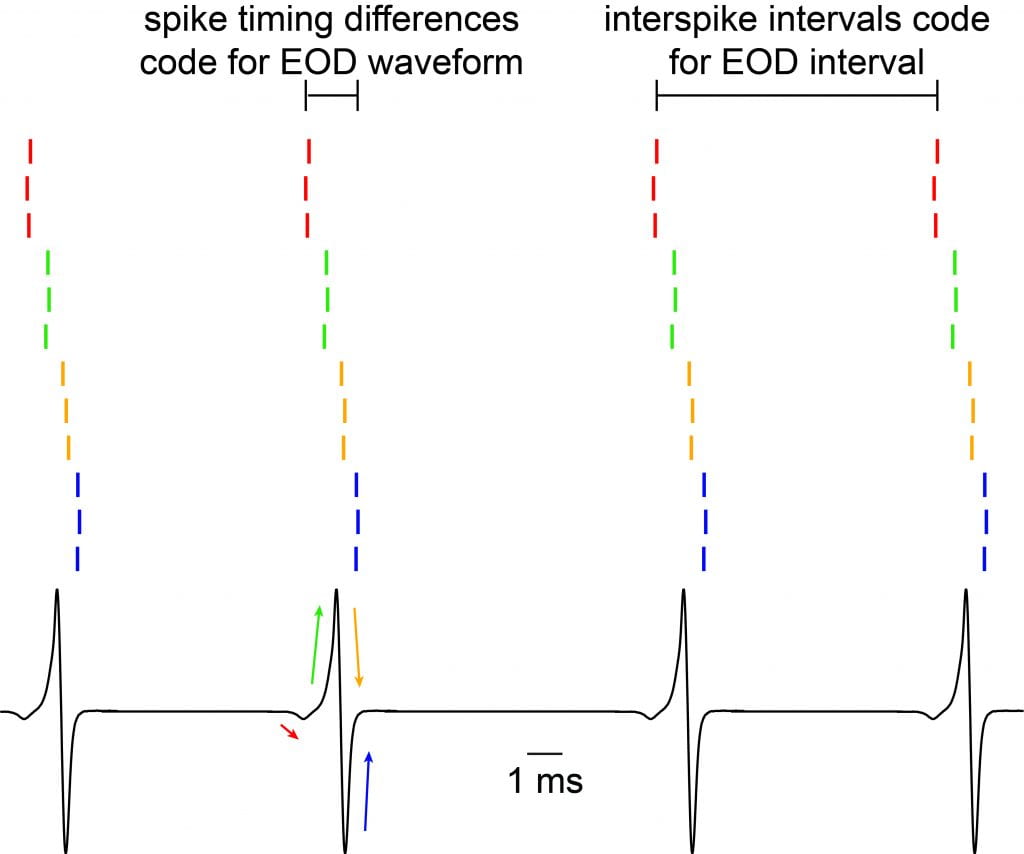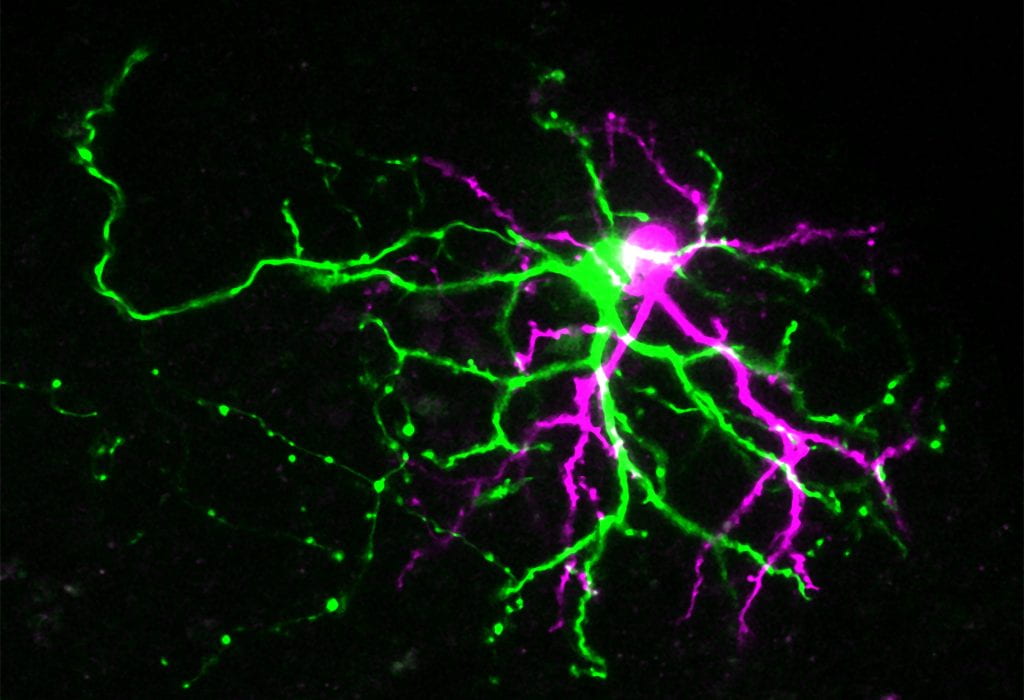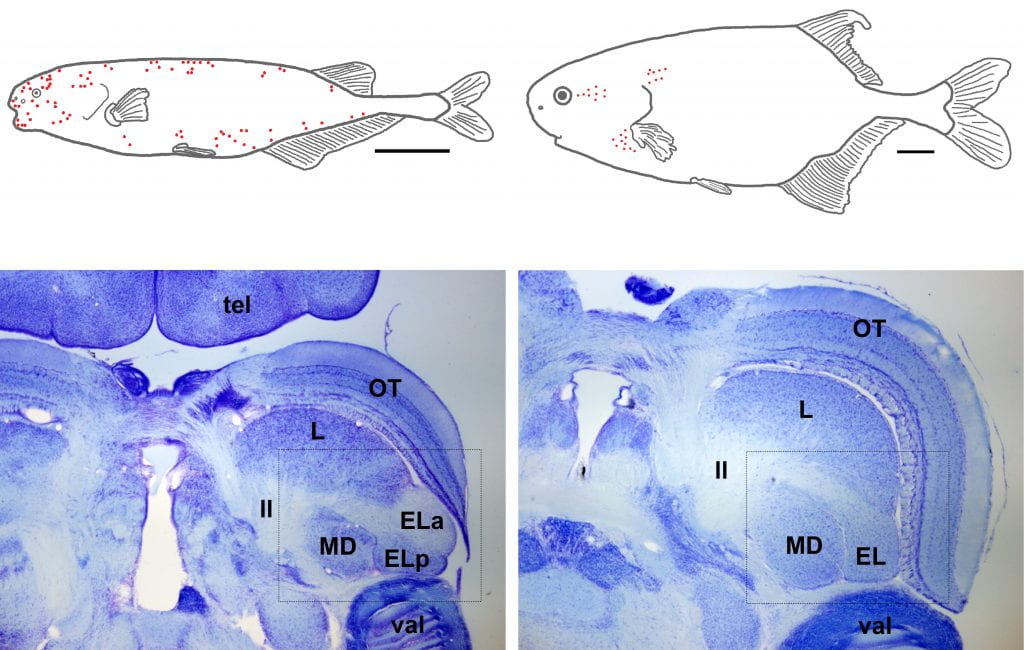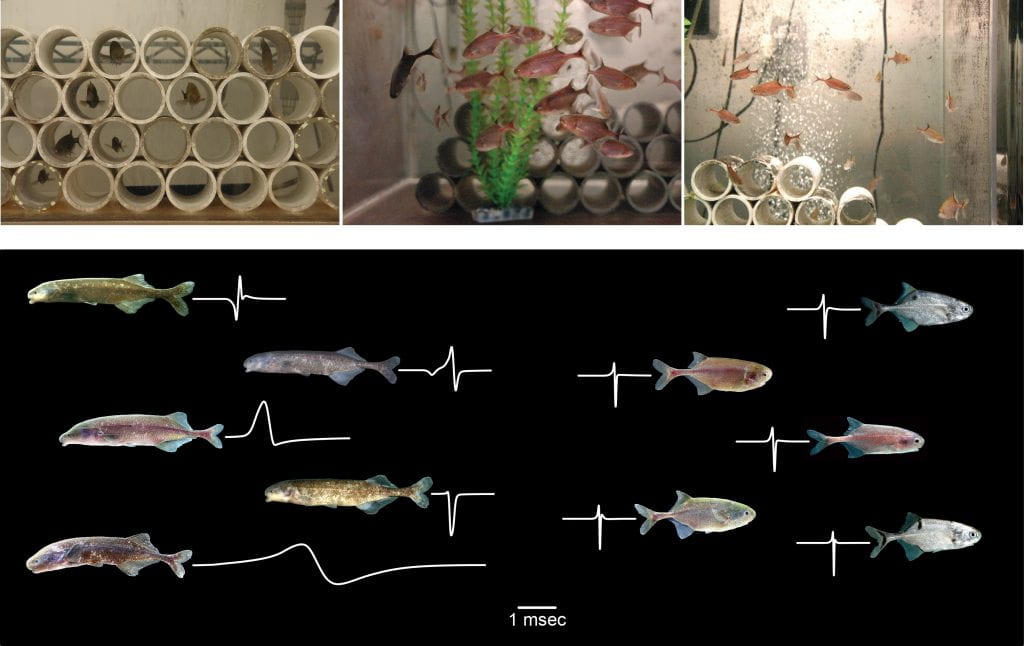Nervous systems evolved to control behavior. One of the primary functions of nervous systems is to receive and process information from the outside world, and then act on that information in ways that maximize survival and reproduction. We employ an integrative approach to understanding animal communication and the evolution of information processing. We are interested in understanding:
- How do sensory receptors encode stimuli in the periphery?
- How do central sensory pathways extract behaviorally relevant information from peripheral responses?
- How does evolutionary change in sensory systems mediate adaptive diversification of perception and behavior?
- How does behavior influence ecological interactions and evolutionary processes?
Our work is unique in its application of detailed neurophysiology within a broad comparative framework, and it has implications for our understanding of neural mechanisms for behavior as well as the evolution of behavioral diversity.
Central Processing of Temporally Coded Stimulus Information
Mormyrid fishes communicate with an electric organ discharge (EOD). The EOD waveform communicates species, sex, relative dominance and possibly individual identity. The intervals between EODs vary, and specific interval sequences serve different functions in social behavior. These signals are encoded into receptor spike times: EOD waveforms are encoded into spike timing differences between receptors and EOD intervals are encoded into spike timing sequences. The central electrosensory system is uniquely suited to linking in vitro studies of synaptic and circuit physiology to information processing in vivo. A major focus of the lab’s work is in understanding how this sensory system extracts behaviorally relevant information from spike times.
Coding of Multiple Stimulus Features by Sensory Microcircuits
Multipolar neurons within the electrosensory midbrain form a densely connected excitatory and inhibitory microcircuit. Many of the basic wiring rules of this circuit are similar to the microcircuitry of sensory cortex. We are interested in how local network interactions among midbrain sensory neurons shape the coding of multiple components of behaviorally relevant stimuli across the neuronal population. We are also interested in understanding how the topology of this microcircuit is determined by activity-dependent plasticity and how this plasticity may adaptively reconfigure the network to optimize the coding of changing stimulus statistics.
Evolutionary Change in Sensory Circuits
We are interested in understanding evolutionary change in sensory systems and how this relates to species differences in behavior and perception. We have discovered two patterns of electrosensory organization associated with perceptual differences in the ability to detect EOD variation. We are now using a comparative approach to identify shared and derived features of these sensory pathways and to determine how changes at the cellular, synaptic, and network level establish species differences in sensory coding and perception.
Evolution of Social Behavior and Communication Signals
In addition to understanding how evolutionary change in neural circuits mediates differences in behavior, we are interested in understanding why these behavioral differences arise and how they may impact evolutionary processes. We are combining observational and experimental behavioral studies with ecological and population genetics studies to understand how differences in ecology, social behavior and life history shape sensory system evolution. We are also using phylogenetic analysis to relate these findings to signal evolution and species diversification.
Mechanisms of Evolutionary Change in Brain Size and Structure
Vertebrate brains are enormously diverse, as this classic image from “The Central Nervous System of Vertebrates” by R. Nieuwenhuys et al illustrates. Overall brain size is one of the most variable features of vertebrate brains, and the relatively large human brain represents one of the defining characteristics of humanity. However, humans are not the only vertebrates that have experienced dramatic increases in encephalization. Mormyrids have long been known for having relatively large and energetically expensive brains. We are using comparative transcriptomics, anatomy, and physiology to characterize evolutionary patterns of changes in brain size and structure and identify underlying genetic and energetic mechanisms.
Comparative Genomics
Planning for mormyrid genomics is underway. Check back soon!




